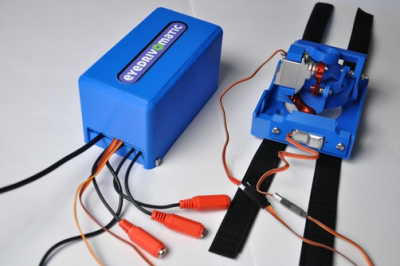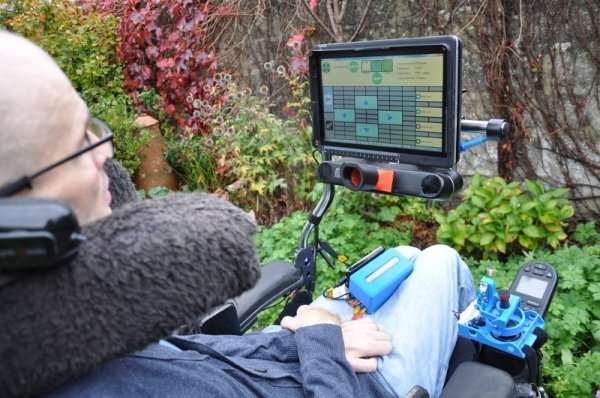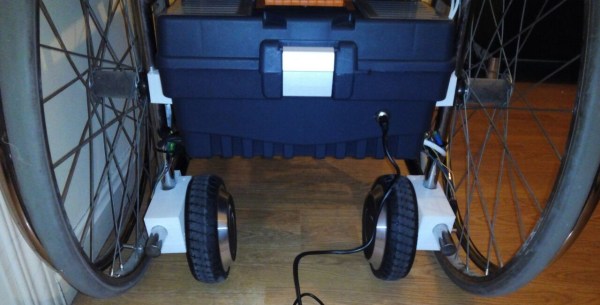For this year’s Hackaday Prize, we opened up five challenges for hackers and tinkerers to create the greatest hardware in five categories. We asked citizen scientists to build something to expand the frontiers of knowledge. We asked automation experts to build something more useful than the Internet of chocolate chip cookies. In the Assistive Technologies portion of the prize, we asked our community of engineers to build something that would open the world up to all of us.
While this year’s Assistive Technologies challenge brought out some great projects, there is one project from last year that must be mentioned. The Eyedrivomatic is a project to turn any electric wheelchair into a gaze-controlled robotic wheelchair, opening up the world to a population who has never had this level of accessibility at a price this low.
 The Eyedrivomatac was the winner of last year’s Hackaday Prize, and given the scope of the project, it’s not hard to see why. The Eyedriveomatic is the solution to the problem of mobility for quadriplegics. It does this surprisingly simply by adding a servo-powered robot onto the joystick of an electric wheelchair, with everything controlled by eye gaze technology. While other systems similar to this exist, it’s the cost of the Eyedrivomatic system that makes it special. The robotic half of the project can be easily manufactured on any 3D printer, all the associated hardware can be bought for just a few dollars, and the software stack is completely open source. The entire system is interchangeable between different models of electric wheelchairs without any modifications, too.
The Eyedrivomatac was the winner of last year’s Hackaday Prize, and given the scope of the project, it’s not hard to see why. The Eyedriveomatic is the solution to the problem of mobility for quadriplegics. It does this surprisingly simply by adding a servo-powered robot onto the joystick of an electric wheelchair, with everything controlled by eye gaze technology. While other systems similar to this exist, it’s the cost of the Eyedrivomatic system that makes it special. The robotic half of the project can be easily manufactured on any 3D printer, all the associated hardware can be bought for just a few dollars, and the software stack is completely open source. The entire system is interchangeable between different models of electric wheelchairs without any modifications, too.
Since winning last year’s Hackaday Prize, Patrick, Steve, and David of the Eyedrivomatic project received the grand prize of $196,883, and are now working towards starting their own production run of their revolutionary device. Right now, there’s a small cottage industry of eye gaze controlled wheelchairs cropping up, and the Eyedrivomatic team is busy building and assembling systems for electric wheelchair users across the globe.
The Eyedrivomatic is the best the Hackaday Prize has to offer. At its heart, it’s an extremely simple device — just a few 3D printed parts, a few servos, an Arduino, and some open source software. The impact the Eyedrivomatic has on its users can’t be understated. It is a liberating technology, one of the greatest projects we’ve seen, and we’ve very proud to have the Eyedrivomatic as a Hackaday Prize champion.
Continue reading “Beyond The Prize: Eye Driving Wheelchairs”


























